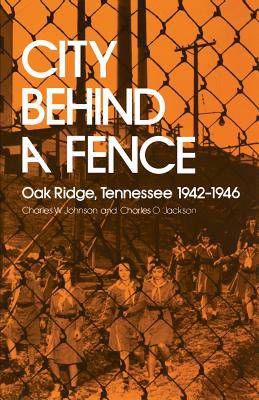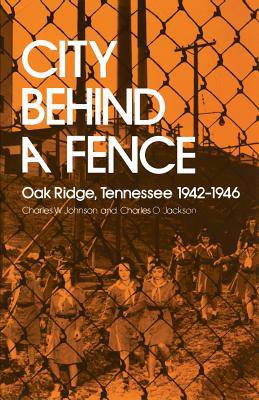
- Afhalen na 1 uur in een winkel met voorraad
- Gratis thuislevering in België vanaf € 30
- Ruim aanbod met 7 miljoen producten
- Afhalen na 1 uur in een winkel met voorraad
- Gratis thuislevering in België vanaf € 30
- Ruim aanbod met 7 miljoen producten
Zoeken
€ 39,45
+ 78 punten
Omschrijving
During World War II, the United States government, working through the Army Corp of Engineer, undertook an unprecedented experiment--the development of the world's first nuclear weapon. Although the fiery conclusion of the Manhattan Project is well known, the prelude to the story--the saga of the people sequestered in the project's three crucial support communities--has remained obscure. Built from the ground up, these "secret cities"are phenomena of special import for American social history. In City Behind a Fence, Charles W. Johnson and Charles O. Jackson chronicle the nature of daily life in Oak Ridge, a facility built in the remote back country of East Tennessee to aid in the construction of the first atomic bomb. Surrounded by a fence patrolled by armed guards, the inhabitants of Oak Ridge--most of whom were unaware of the nature of the activity at the facility--spent much of the war period physically cut off from the outside world. The authors analyze the people who lived and worked in this unique setting. They use previously classified material and extensive oral interviews to portray the stresses and patterns of life in the city, focusing on problems of housing, racial segregation, education, recreation, interaction with surrounding communities, the extreme security measures, and the eventual "normalization" of the community. The history of war-time Oak Ridge graphically reveal the impact of the single-minded, massive endeavor on the lives of those who struggled, mostly unknowingly, to launch the nation and the world into the Atomic Age.
Specificaties
Betrokkenen
- Auteur(s):
- Uitgeverij:
Inhoud
- Aantal bladzijden:
- 272
- Taal:
- Engels
Eigenschappen
- Productcode (EAN):
- 9780870493096
- Verschijningsdatum:
- 27/03/1981
- Uitvoering:
- Paperback
- Formaat:
- Trade paperback (VS)
- Afmetingen:
- 140 mm x 215 mm
- Gewicht:
- 381 g

Alleen bij Standaard Boekhandel
+ 78 punten op je klantenkaart van Standaard Boekhandel
Beoordelingen
We publiceren alleen reviews die voldoen aan de voorwaarden voor reviews. Bekijk onze voorwaarden voor reviews.











